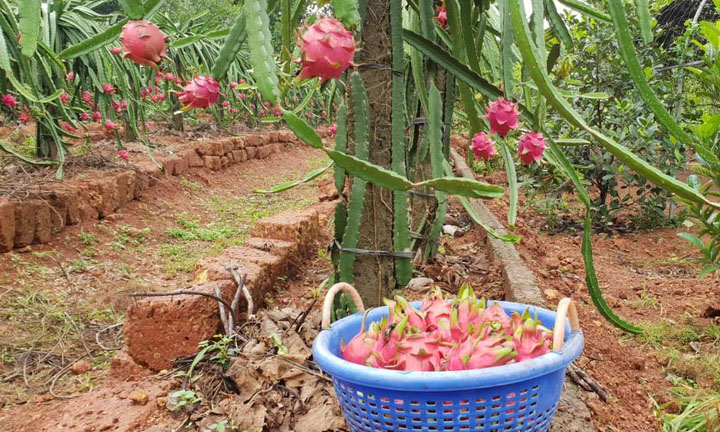SOURCE: A. M. Jigeesh, The Hindu
Following the footsteps of the Gujarat and Haryana Governments, the Centre has decided to promote the cultivation of dragon fruit, known as a “super fruit” for its health benefits. The Centre feels that considering the cost effectiveness and global demand for the fruit due to its nutritional values, its cultivation can be expanded in India. At present, this exotic fruit is cultivated in 3,000 hectares; the plan is to increase cultivation to 50,000 hectares in five years.
The Gujarat Government recently renamed dragon fruit as kamlam (lotus) and announced an incentive for farmers who cultivate it. The Haryana Government also provides a grant for farmers who are ready to plant this exotic fruit variety. The fruit is considered good for diabetic patients, low in calories and high in nutrients like iron, calcium, potassium and zinc.
Addressing a national conclave on the fruit here on Thursday, Union Agriculture Secretary Manoj Ahuja said the demand for the fruit is high in domestic and global markets because of its nutritional values. “Fifty thousand hectares in five years is an achievable target. The demand for the fruit will remain. Prices for farmers will also be good. The benefit is that this fruit can be cultivated in degraded and rainfed land,” Mr. Ahuja said. He added that the Centre will assist States in providing good quality planting materials to farmers.
Talking to The Hindu on the sidelines of the conclave, he said the Centre can also provide specific target-based help to States and farmers under the Mission for Integrated Development of Horticulture (MIDH). “Processing infrastructure can also be developed with the help of the Food Processing Ministry. Its cultivation will be beneficial for farmers and consumers. It is a win-win situation for all,” he added.
According to the authorities, and the Indian Council of Agriculture Research, the fruit plant doesn’t need much water and can be cultivated on dry land, too. Horticulture Commissioner Prabhat Kumar told The Hindu that dragon fruit is now sold at a price of ₹400 per kg and the effort is to make it available to consumers for ₹100 per kg. “The cost of cultivation is initially high. But the plant doesn’t need productive land; it gives maximum production from non-productive, less fertile area. This is beneficial for a lot of farmers,” Dr. Kumar said.
The Centre plans to come up with an annual action plan to motivate more State governments. At the moment, Mizoram tops among the States that cultivate this fruit, which is indigenous to Mexico and is now produced mainly in Vietnam. The export of the fruit has made a huge contribution to Vietnam’s GDP. “All the States in India except cold areas are suitable for dragon fruit plants. Market demand so high as production is less,” G. Karunakaran of the Indian Institute of Horticultural Research said.
Dr Karunakaran added that India is now importing about 15,491 tonnes of dragon fruits and has potential to match the production of China, where cultivation of the fruit takes place in 40,000 hectares, and Vietnam, which grows the fruit in 60,000 hectares. “The initial investment high. But it gives fast returns within a year. The red and pink varieties of the fruit give better yield,” Dr. Karunakaran said at the conclave.

